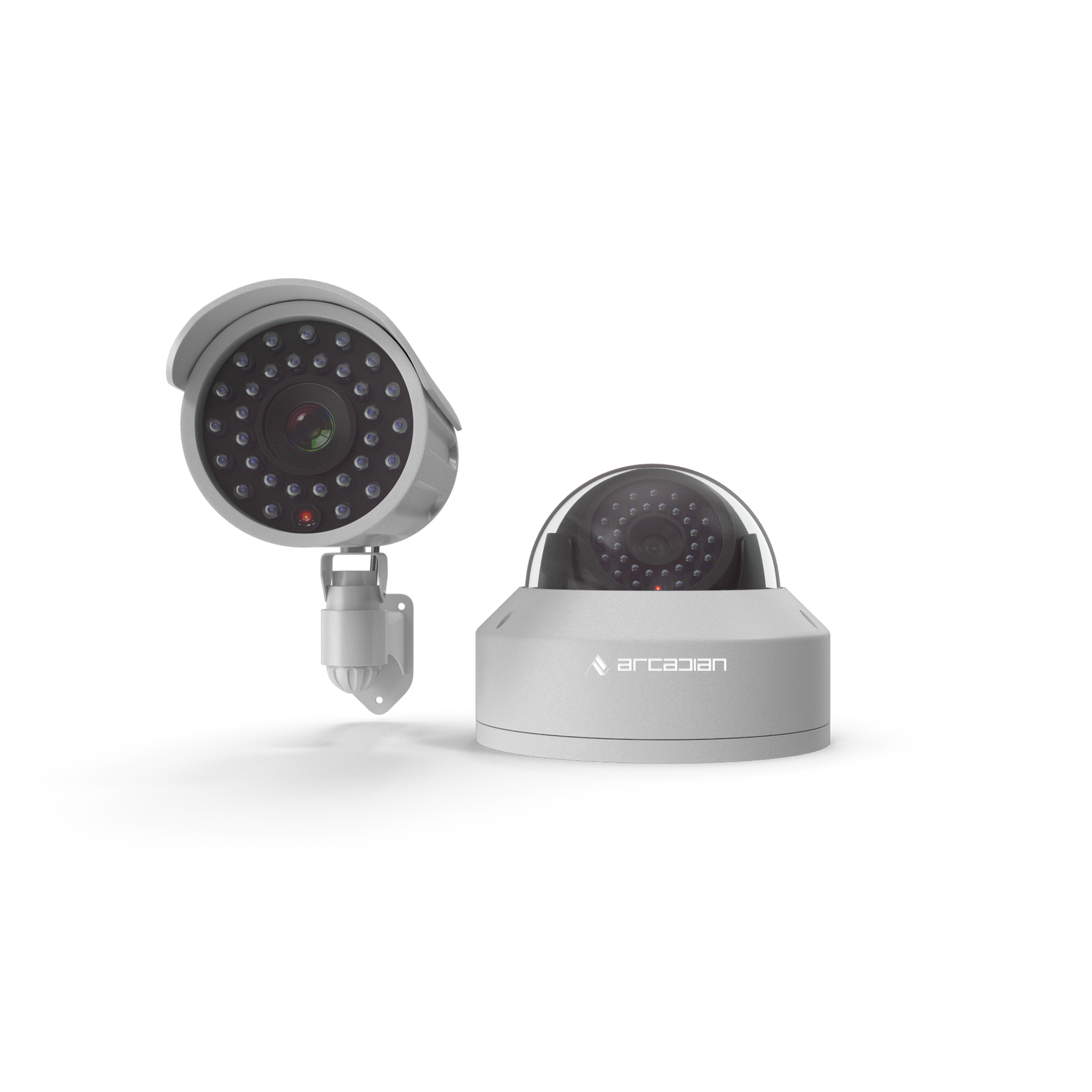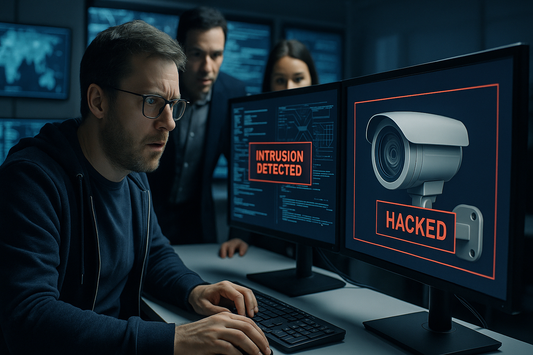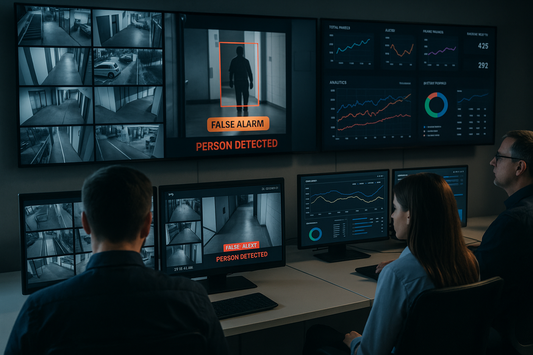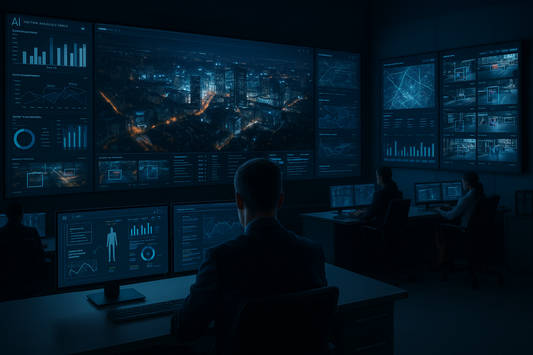Retail Loss Prevention in 2025: Standards, Terminology, Brands, and the Future of AI-Powered Security
From rising organized retail crime to compliance mandates, loss prevention is evolving fast. Here’s how industry standards, AI tech, and key players shape the battle against retail shrink in 2025.

Introduction
Retailers in North America lost an estimated $121.6 billion to shrink in 2024, according to the National Retail Federation (NRF). Loss prevention (LP) has shifted from a backroom function to a boardroom priority. ArcadianAI and its AI assistant, Ranger, stand at the forefront of this shift—transforming loss prevention from reactive CCTV review to proactive, context-aware security intelligence.
Competitors like Verkada, Genetec, Milestone, Eagle Eye Networks, and Rhombus have invested heavily in cloud platforms, but many still rely on static analytics that fail to adapt to different store environments, lighting conditions, or human behavior nuances. The stakes are high: without robust LP programs, retailers risk margin erosion, brand damage, and legal exposure.
This guide breaks down the standards, terminology, major players, statistics, and practical strategies that define retail loss prevention in 2025—while showing why ArcadianAI is redefining the category.
Quick Summary / Key Takeaways
-
Retail shrink exceeded $120B in 2024, driven by organized crime.
-
Standards like ISO 28000 and C-TPAT guide LP strategy.
-
AI is shifting LP from reactive to proactive monitoring.
-
ArcadianAI offers dynamic, store-specific AI analytics.
-
Competitor platforms often struggle with environmental adaptability.
Background & Relevance
Loss prevention has long been part of retail operations, but the scale and sophistication of threats in 2025 are unprecedented. ORC (Organized Retail Crime) rings operate across borders, often reselling goods online within hours of theft. According to FBI field reports (2024), multi-state ORC groups have increased activity by 38% YoY.
Retailers are also navigating compliance requirements:
-
PCI DSS v4.0 for payment security
-
NDAA Section 889 restricting non-compliant surveillance gear
-
GDPR and CCPA for customer data protection
The growing complexity makes standardized approaches essential—and AI indispensable.
Core Topic Exploration
What Is Loss Prevention in Retail?
Loss prevention (LP) refers to the policies, technologies, and processes used to reduce shrink—the difference between recorded inventory and actual inventory. Shrink can be caused by theft, fraud, errors, or damage.
Primary shrink sources (NRF, 2024):
-
External Theft (ORC, shoplifting) – 37%
-
Internal Theft (employee fraud) – 28%
-
Administrative Errors – 22%
-
Vendor Fraud & Others – 13%
Retail Loss Prevention Standards
-
ISO 28000 – Supply chain security management
-
C-TPAT – Customs-Trade Partnership Against Terrorism (U.S.)
-
ANSI/NFPA 731 – Security systems standards
-
NDAA Compliant Hardware – For federal and retail compliance in the U.S.
-
ASIS International Guidelines – Risk assessment and investigative standards
ArcadianAI ensures NDAA compliance, integrates with ISO-aligned LP workflows, and offers analytics fine-tuned to different retail formats—from convenience stores to luxury boutiques.
Key Loss Prevention Terminology
-
EAS (Electronic Article Surveillance) – Tag-based theft deterrence.
-
POS Exception Reporting – Identifying unusual transactions.
-
Sweethearting – Employee collusion with customers for theft.
-
Pushout Theft – Walking out with unpaid carts.
-
Booster Bag – Shielded bag to bypass EAS gates.
Major LP Technology Providers in 2025
| Company | Strengths | Weaknesses |
|---|---|---|
| ArcadianAI | Adaptive AI, camera-agnostic, cloud-native, advanced ORC detection | Newer entrant, less legacy hardware |
| Verkada | Integrated hardware + cloud | Limited to own cameras |
| Genetec | Mature VMS, wide hardware support | Complex deployment |
| Milestone | Highly customizable | Steeper learning curve |
| Eagle Eye Networks | Strong cloud platform | Dependent on internet uptime |
| Rhombus | Cloud-native, good analytics | Hardware lock-in |
Why AI is Reshaping LP
Traditional LP relied on manual review—impossible with 99% of footage never watched. AI like Ranger processes live streams in context, recognizing theft patterns, employee collusion, and suspicious behaviors even in low-light or high-traffic environments.
Comparisons & Use Cases
| Feature | ArcadianAI Ranger | Traditional VMS | Basic VSaaS |
|---|---|---|---|
| Adaptability | Store-specific AI tuning | Generic rules | Fixed algorithms |
| ORC Detection | Real-time behavioral alerts | Manual identification | Delayed alerts |
| Compliance | NDAA, GDPR, PCI DSS | Varies | Varies |
| Multi-Store Insights | Unified analytics dashboard | Siloed feeds | Limited aggregation |
| ROI | 20–35% shrink reduction in pilots | Low | Medium |
Common Questions (FAQ)
Q1: What’s the most common cause of retail shrink?
External theft and ORC, accounting for over one-third of losses.
Q2: Do I need NDAA-compliant cameras for LP?
Yes, if operating in U.S. jurisdictions with federal compliance requirements.
Q3: How does AI detect theft?
By recognizing patterns like concealment, suspicious linger times, and transaction anomalies.
Q4: Which LP brands integrate best with existing cameras?
ArcadianAI, Genetec, and Milestone have broad camera compatibility.
Q5: How fast can LP AI deliver ROI?
ArcadianAI clients report measurable shrink reduction within 90 days.
Conclusion & CTA
Loss prevention in 2025 is a blend of compliance, technology, and adaptability. Brands relying solely on static, hardware-locked platforms will struggle to keep up with evolving threats.
ArcadianAI’s Ranger delivers context-aware, adaptive AI that doesn’t just watch footage—it understands it, predicts risk, and delivers ROI fast.
See ArcadianAI in Action →Get Demo – ArcadianAI
Security Glossary (2025 Edition)
AI Alerts — Automated notifications triggered by AI analysis of live or recorded footage.
Booster Bag — Shielded bag used to bypass EAS gates.
C-TPAT — U.S. Customs program to improve supply chain security.
EAS (Electronic Article Surveillance) — Tag and gate system for theft deterrence.
GDPR — EU data protection regulation impacting video and customer data use.
NDAA Compliance — U.S. ban on certain non-compliant surveillance hardware.
ORC (Organized Retail Crime) — Coordinated theft by professional groups.
PCI DSS — Payment Card Industry Data Security Standard.
POS Exception Reporting — Software that flags unusual transactions.
Pushout Theft — Theft involving walking out with unpaid merchandise.
Shrink — Difference between recorded and actual inventory.
Sweethearting — Employee-assisted theft at POS.
VMS (Video Management System) — Software for managing video feeds and storage.
VSaaS (Video Surveillance as a Service) — Cloud-based video storage and analytics.

Security is like insurance—until you need it, you don’t think about it.
But when something goes wrong? Break-ins, theft, liability claims—suddenly, it’s all you think about.
ArcadianAI upgrades your security to the AI era—no new hardware, no sky-high costs, just smart protection that works.
→ Stop security incidents before they happen
→ Cut security costs without cutting corners
→ Run your business without the worry
Because the best security isn’t reactive—it’s proactive.






